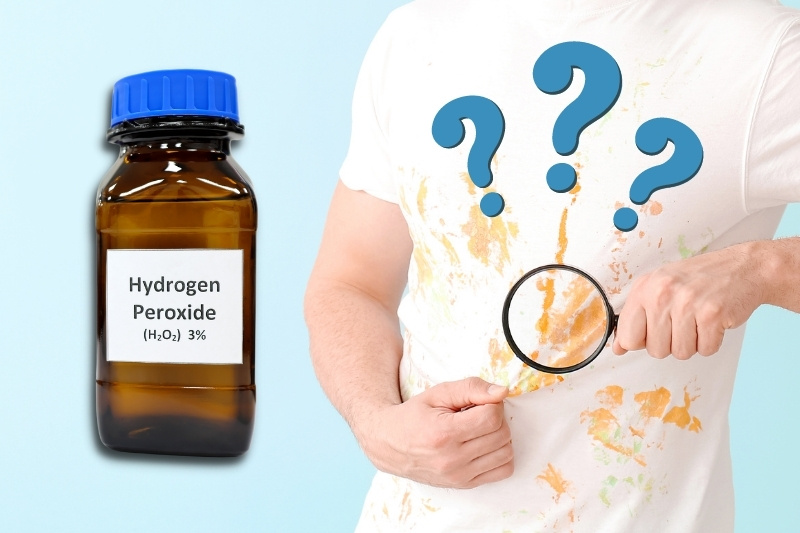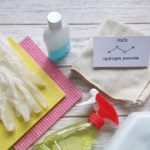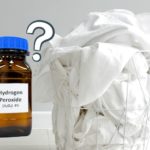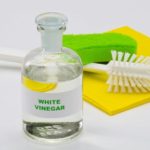Hydrogen peroxide is an environmentally-friendly alternative to bleach with a wide variety of uses in the home.
It effectively kills bacteria, viruses, and mould. In addition, it can be used for effective stain removal.
The chemical successfully cuts through stain-causing substances and lifts them from fabrics and hard surfaces around your home.
If you’ve got tough stains to bust, hydrogen peroxide could be the solution!
This article teaches you how to use hydrogen peroxide for stain removal on various surfaces, including clothing, carpets, and toilets. Keep reading for a clean, stain-free home!
Removing Stains from Clothing with Hydrogen Peroxide
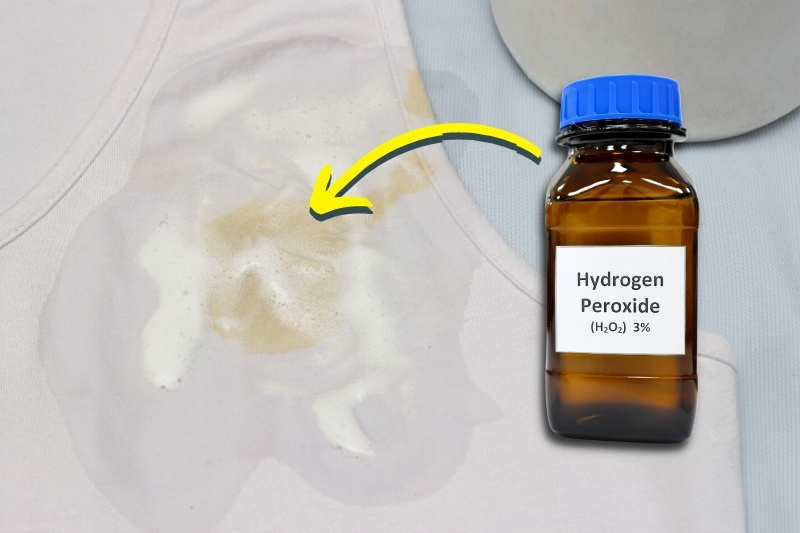
One of the most common places stains arise is on our clothes. Hydrogen peroxide at a 3% concentration works wonders in removing all types of stains from laundry, including grass stains, blood stains, and food stains.
It also has additional whitening power and is known to brighten your yellowed whites!
To use hydrogen peroxide to remove stains from clothes, follow these steps:
- Perform a patch test: Put a few drops of hydrogen peroxide on a hidden area of your garment to make sure it doesn’t cause damage. This is particularly important for coloured fabrics; as hydrogen peroxide is a bleaching agent, it can remove colours.
- Treat the stain: If no damage resulted from the patch test, pour a small amount of hydrogen peroxide to cover the stain. Let this soak into the fabric for around ten minutes. You can leave it a little longer for stubborn stains, but be careful not to let it destroy the material.
- Wash as usual: Put your stained clothes in the washing machine and wash as usual. If your clothes are white, why not pour a little hydrogen peroxide into the detergent compartment? This helps to brighten the materials, making your whites look brand-new!
How to Use Hydrogen Peroxide as a Carpet Stain Remover
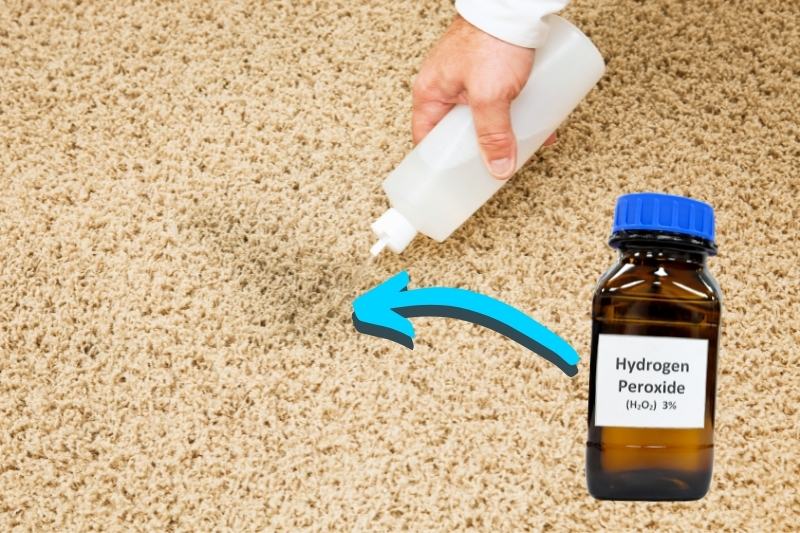
Carpets are another surface that constantly gets stained from food spills and other substances.
Whether your carpet is covered in orange juice stains, lily pollen stains, or notoriously stubborn red wine stains, hydrogen peroxide can provide the solution!
However, remember that hydrogen peroxide is a strong chemical that may bleach some carpets, so always do a patch test first.
You might prefer using off-the-shelf carpet cleaners, white vinegar, or a simple mixture of washing-up liquid and water when dealing with a small stain. These are much gentler on your carpet and less likely to cause damage.
If you want to use hydrogen peroxide to remove carpet stains, here is how:
- Soak up excess liquid: Always start by taking a clean cloth and soaking up as much of the stain-causing substance as possible. Press the cloth on the carpet rather than rubbing it, as the latter can work the stains deeper into the fibres.
- Make a hydrogen peroxide solution: Mix two parts hydrogen peroxide with one part washing up liquid in a large bowl.
- Treat the carpet stains: Take a clean cloth and dab it in the hydrogen peroxide solution, then dab the carpet stain with the solution. Gently dab at the stain repeatedly until it’s lifted from the fibres – remember never to rub, as this could make things worse.
- Rinse with water: Once you’re happy with the results, pour a small amount of cold water on the treated area to remove the excess hydrogen peroxide. Soak up the remaining water with a clean cloth, and you’re done!
Hydrogen Peroxide for Removing Bathroom Stains
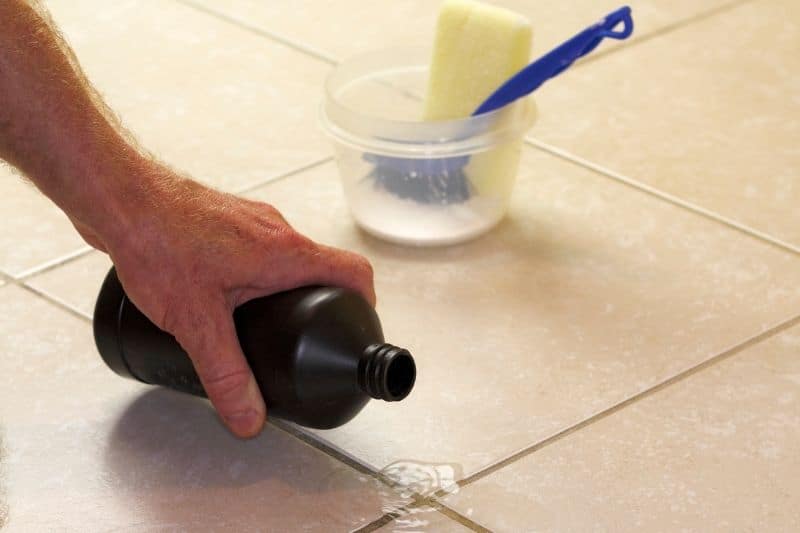
Bathrooms are prone to getting dirty, from stained grout to brown toilet bowls. As a versatile cleaner, hydrogen peroxide can be used to solve all of these issues:
Removing toilet bowl stains
To clean your toilet bowl using hydrogen peroxide, follow these steps:
- Pour half a cup of powdered hydrogen peroxide into your stained toilet and let it sit for 20 minutes to work deeply into the stains.
- Once the time is up, take your toilet brush and scrub at the stains. Scrubbing helps to remove the stains from the toilet bowl.
- Flush the toilet, and the bowl should look like new! Repeat the process if you’re unhappy with the results and stains persist.
Our method for removing stains from your toilet bowl uses hydrogen peroxide powder rather than liquid. If you only have liquid hydrogen peroxide to hand, you can use this instead. However, the powdered form is better for toilets as the particles create more friction.
Cleaning grout with hydrogen peroxide
Removing grout stains with hydrogen peroxide is easy! Take a spray bottle of hydrogen peroxide and spray it on your stained bathroom grout.
Let it sit for 2-3 minutes, then scrub the stains away using an old toothbrush. You can repeat the process as many times as necessary.
For stubborn stains, you need to mix hydrogen peroxide with another powerful cleaning agent: bicarbonate of soda. Here’s how:
- Mix one part liquid hydrogen peroxide with two parts bicarbonate of soda to form a paste. You should be aiming for a thick consistency.
- Using a damp sponge, apply the paste directly to the grout stains. Let the mixture sit on the stains for around 30 minutes.
- Take a scrubbing brush or old toothbrush and scrub the mixture deeper into the grout. Then, wipe away the remaining paste with a damp sponge.
Safety Precautions for Removing Stains with Hydrogen Peroxide
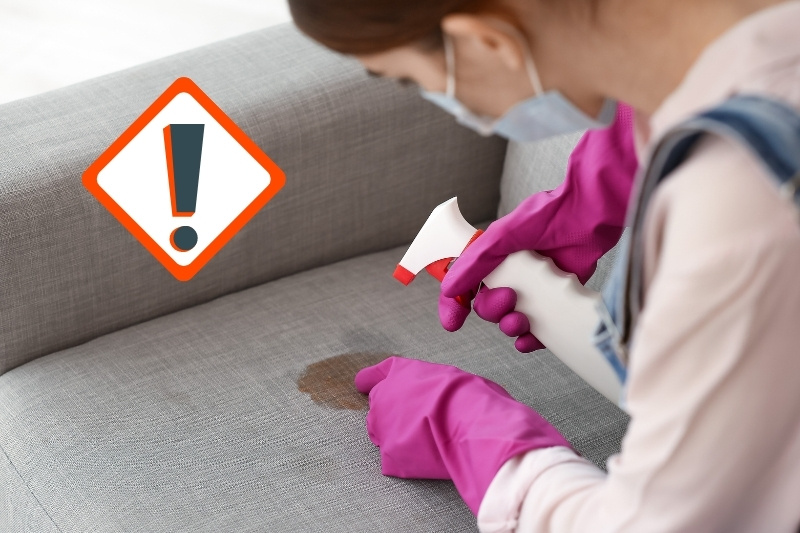
You only need to use a 3% concentration when removing stains with hydrogen peroxide. This is strong enough to lift stubborn stains without exposing you to significant health risks. Most contact with household-strength peroxide is relatively harmless!
Nevertheless, you are still handling a chemical and should apply caution.
Although 3% hydrogen peroxide is generally safe, it becomes toxic when ingested or ingested. The chemical can also cause skin and ocular irritation through direct contact with the skin or eyes.
Below are some tips to help you avoid these risks when cleaning with hydrogen peroxide:
- Wear gloves when cleaning to protect your hands from the chemical
- Wash your hands after cleaning to prevent accidental ingestion, even if wearing gloves
- Keep children and pets outside the room while you’re using hydrogen peroxide
- Open the windows to help with ventilation as you remove stains

Hannah has a passion for cleaning. She worked her way around Australia by cleaning hostels in exchange for free accommodation and used her cleaning skills to bag a job as a chalet host for a luxury ski company in France.
